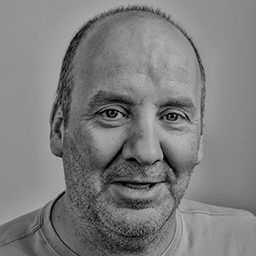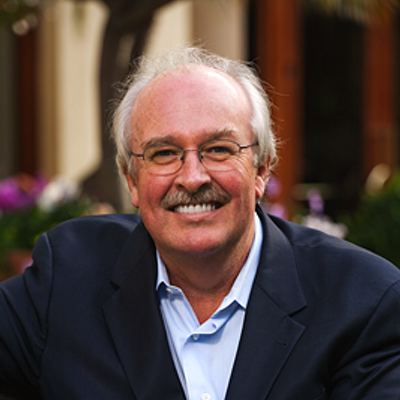Lucie Ide is a physician running Rimidi, a company helping health systems manage patients with chronic conditions. They extract data from EMRs and transfer this into workflow for care teams, predominantly at ACOs and other risk bearing organizations, but also increasingly with FFS groups using RPM to manage those patients. Their current moves are to continue to extend from their first patient group (diabetes) to all types of chronic patients. We chatted about her company, but also about the wider move (or lack of it) to better manage patients in the US system–Matthew Holt
The Money’s in the Wrong Place. How to Fund Primary Care

By MATTHEW HOLT
I was invited on the Health Tech Talk Show by Kat McDavitt and Lisa Bari and I kinda ranted (go to 37.16 here) about why we don’t have primary care, and where we should find the money to fix it. I finally got around to writing it up. It’s a rant but a rant with a point!
We’re spending way too much money on stuff that is the wrong thing.
30 years ago, I was taught that we were going to have universal health care reform. And then we were going to have capitated at-risk entities. then below that, you have all these tech enabled services, which are going to make all this stuff work and it’s all going to be great, right?
Go back, read your Advisory Board Company reports from 1994. It says all this.
But (deep breath here) — partly as a consequence of Obamacare & partly as a consequence of inertia in the system, and a lot because most people in health care actually work in public utilities or semi-public utilities because half the money comes from the government — instead of that, what we’ve got is this whole series of massive predominantly non-profit organizations which have made a fortune in the last decades. And they’ve stuck it all in hedge funds and now a bunch of them literally run actual hedge funds.
Ascension runs a hedge fund. They’ve got, depending who you believe, somewhere between 18 billion and 40 billion in their hedge fund. But even teeny guys are at it. There’s a hospital system in New Jersey called RWJ Barnabas. It’s around a 20 hospital system, with about $6 billion in revenue, and more than $2.5 billion in investments. I went and looked at their 990 (the tax form non-profits have to file). In a system like that–not a big player in the national scheme–how many people would you guess make more than a million dollars a year?
They actually put it on their 990 and they hope no one reads it, and no one does. The answer is 28 people – and another 14 make more than $750K a year. I don’t know who the 28th person is but they must be doing really important stuff to be paid a million dollars a year. Their executive compensation is more than the payroll of the Oakland A’s.
On the one hand, you have these organizations which are professing to be the health system serving the community, with their mission statements and all the worthy people on their boards, and on the other they literally paying millions to their management teams.
Go look at any one of these small regional hospital systems. The 990s are stuffed with people who, if they’re not making a million, they’re making $750,000. The CEOs are all making $2m up to $10 million in some cases more. But it also goes down a long way. It’s like the 1980s scene with Michael Douglas as Gordon Gecko in Wall Street criticizing all the 35 vice presidents in whatever that company was all making $200K a year.
Meanwhile, these are the same organizations that appear in the news frequently for setting debt collectors onto their incredibly poor patients who owe them thousands or sometimes just hundreds of dollars. In one case ProPublica dug up it was their own employees who owed them for hospital bills they couldn’t pay and their employer was docking their wages — from $12 an hour employees.
Continue reading…Hospital Systems: A Framework for Maximizing Social Benefit
By JEFF GOLDSMITH and IAN MORRISON


Hospital consolidation has risen to the top of the health policy stack. David Dranove and Lawton Burns argued in their recent Big Med: Megaproviders and the High Cost of Health Care in America (Univ of Chicago Press, 2021) that hospital consolidation has produced neither cost savings from “economies of scale” nor measurable quality improvements expected from better care co-ordination. As a consequence, the Biden administration has targeted the health care industry for enhanced and more vigilant anti-trust enforcement.
However, as we discussed in a 2021 posting in Health Affairs, these large, complex health enterprises played a vital role in the societal response to the once-in-a-century COVID crisis. Multi-hospital health systems were one of the only pieces of societal infrastructure that actually exceeded expectations in the COVID crisis. These systems demonstrated that they are capable of producing, rapidly and on demand, demonstrable social benefit.
Exemplary health system performance during COVID begs an important question: how do we maximize the social benefits of these complex enterprises once the stubborn foe of COVID has been vanquished? How do we think conceptually about how systems produce those benefits and how should they fully achieve their potential for the society as a whole?
Origins of Hospital Consolidation
In 1980, the US hospital industry (excluding federal, psych and rehab facilities) was a $77 billion business comprised of roughly 5,900 community hospitals. It was already significantly consolidated at that time; roughly a third of hospitals were owned or managed by health systems, perhaps a half of those by investor-owned chains. Forty years later, there were 700 fewer facilities generating about $1.2 trillion in revenues (roughly a fourfold growth in real dollar revenues since 1980), and more than 70% of hospitals were part of systems.
It is important to acknowledge here that hundreds more hospitals, many in rural health shortage areas or in inner cities, would have closed had they not been rescued by larger systems. Given that a large fraction of the hospitals that remain independent are tiny critical access facilities that are marginal candidates for mergers with larger enterprises, the bulk of hospital consolidation is likely behind us. Future consolidation is likely not to be of individual hospitals, but of smaller systems that are not certain they can remain independent.
Today’s multi-billion dollar health systems like Intermountain Healthcare, Geisinger, Penn Medicine and Sentara are far more than merely roll-ups of formerly independent hospitals. They also employ directly or indirectly more than 40% of the nation’s practicing physicians, according to the AMA Physician Practice Benchmark Survey. They have also deployed 179 provider-sponsored health plans enrolling more than 13 million people (Milliman Torch Insight, personal communication 23 Sept, 2021). They operate extensive ambulatory facilities ranging from emergency and urgent care to surgical facilities to rehabilitation and physical therapy, in addition to psychiatric and long-term care facilities and programs.
Health Systems Didn’t Just “Happen”; Federal Health Policy Actively Catalyzed their Formation
Though many in the health policy world attribute hospital consolidation and integration to empire-building and positioning relative to health insurers, federal health policy played a catalytic role in fostering hospital consolidation and integration of physician practices and health insurance. In the fifty years since the HMO Act of 1973, hospitals and other providers have been actively encouraged by federal health policy to assume economic responsibility for the total cost of care, something they cannot do as isolated single hospitals.
Continue reading…Consumer Health Tech Market Outlook for 2020 | Robert Garber, 7Wire Ventures
By JESSICA DaMASSA, WTF HEALTH
7Wire Ventures is a venture fund that invests in early-stage healthcare companies that are focused on connecting with the healthcare consumer — kind of like one of the most successful companies in its portfolio, Livongo, which went public in 2019. Robert Garber, a partner with the firm, stops by to share his point-of-view on where the consumer health tech market will be headed in 2020, if we’ll see more exits, and whether or not consumer health will be able to gain traction with healthcare’s established players like payers and health systems.
Filmed at J.P. Morgan Healthcare Conference in San Francisco, January 2020
THCB Spotlight | Chris Gervais, CTO of Kyruus
By ZOYA KHAN
Today on THCB Spotlight, Chris Gervais, Chief Technology Officer of Kyruus, tells us about what Kyruus is doing to improve patient access and help health systems match patients to the right providers. Health systems often don’t know enough about their providers, and Kyruus is working to empower health systems to use that data in a computable way in order to coordinate patient demand with physician supply.
UPMC’s Rasu Shrestha on Consumer Health in ‘Big’ Healthcare
The phrase ‘consumer health’ doesn’t mean what it used to. And, when you really think about it, neither does the word ‘consumer.’ We’ve changed. Wielding the power of our smart phones, wearable devices, and proximity to CVS Minute Clinics – and armed with expectations of near-instant gratification thanks to the Amazons and Ubers of the world – we’re more demanding, exacting and impatient of the health system than ever before.
As all of this starts to change demand, supply, and (fingers crossed) our entire industry, it’s tempting to focus on what the new guys are doing. I’m as guilty as any for being fixated on the doings of the big tech companies and sexy little startups that are coming into our space. But, the reality is that the greatest amount of change will have to come from those stalwarts of the ‘healthcare establishment’ – the health systems and the payers that ARE the system in and of itself.
So, how are they thinking about the consumerization of healthcare? What does it mean to ‘empower consumers’ when your organization is bearing the risk associated with caring for their lives? Lucky for us, Dr. Rasu Shrestha, Chief Innovation Officer of health-system/payer-system giant UPMC can break it down.
Warning: This interview is long and heady, but, man, is it ever worth it. Rasu talks about the macroeconomics of shifting risk from insurers to providers and consumers, business model implications for all players involved, and how the ‘free the data’ movement feeds into all this. Last but not least, he talks about the kinds of startups he’s hoping will help payers and providers usher in this new consumer-driven era.
If you’re doing any kind of business in healthcare today, you’ll want to give this a listen. And, if Rasu wants to add another doctorate to his name, this interview analyzing ‘the macroeconomics and shifting risk environment of the consumerization of healthcare’ might be the start of his dissertation. We’ll look for our @wtf_health footnote.
Get a glimpse of the future of healthcare by meeting the people who are going to change it. Find more WTF Health interviews here or check out www.wtf.health. Filmed at the Bayer G4A Accelerator Launch in NYC, May 2018.









